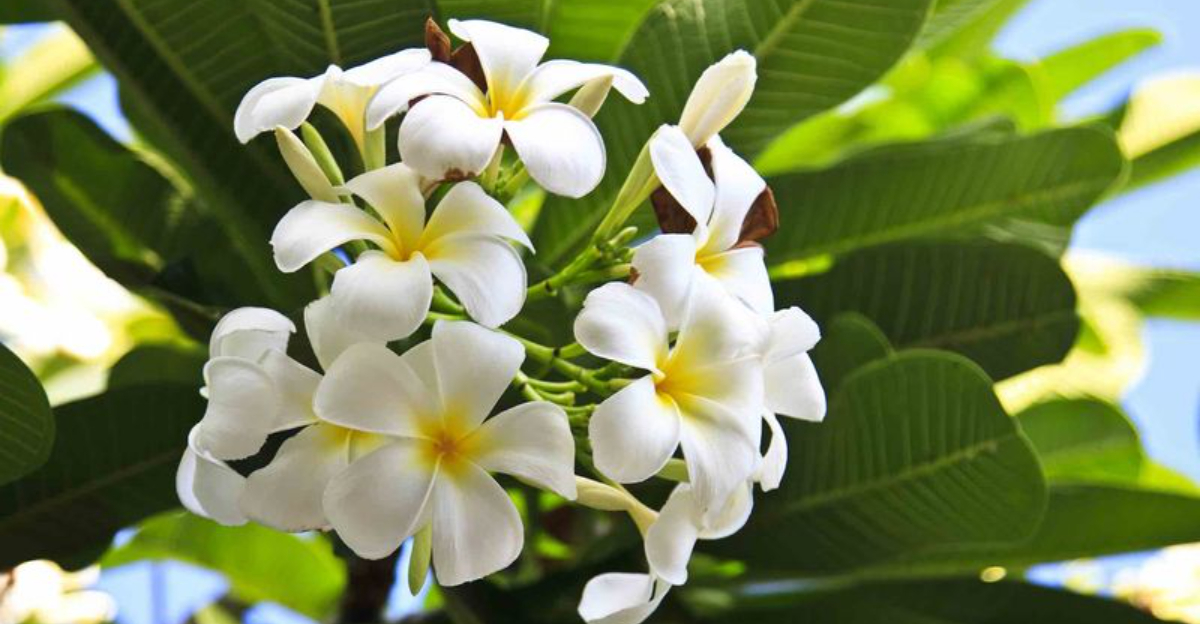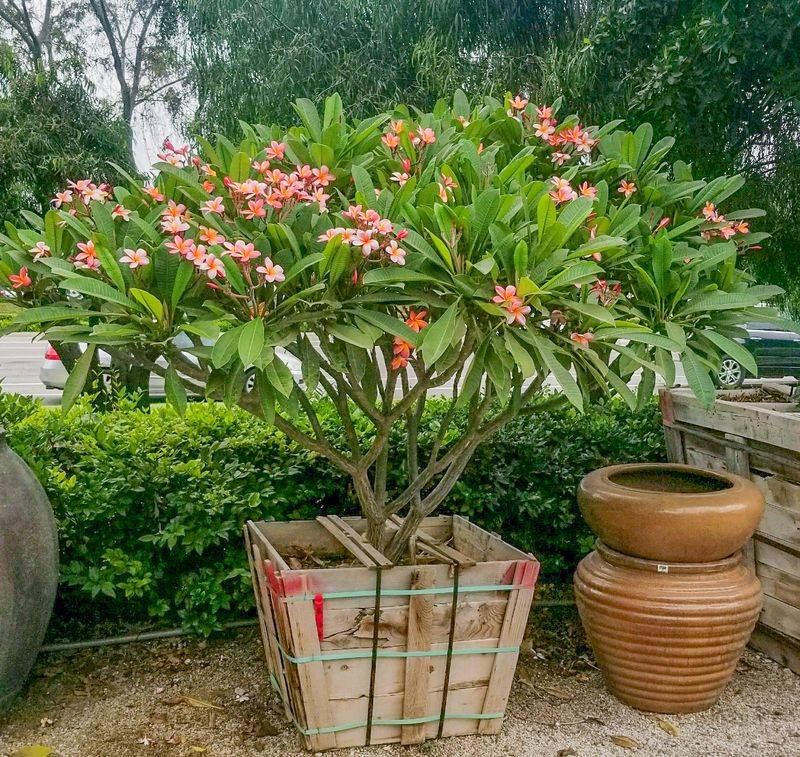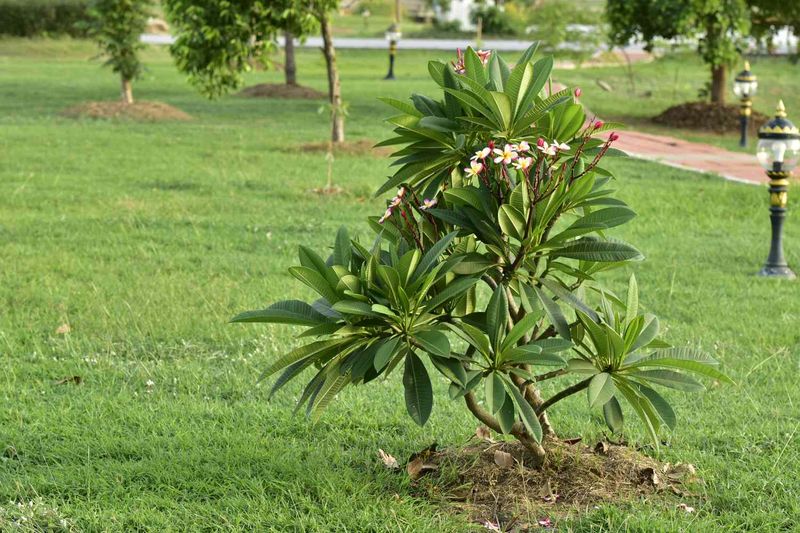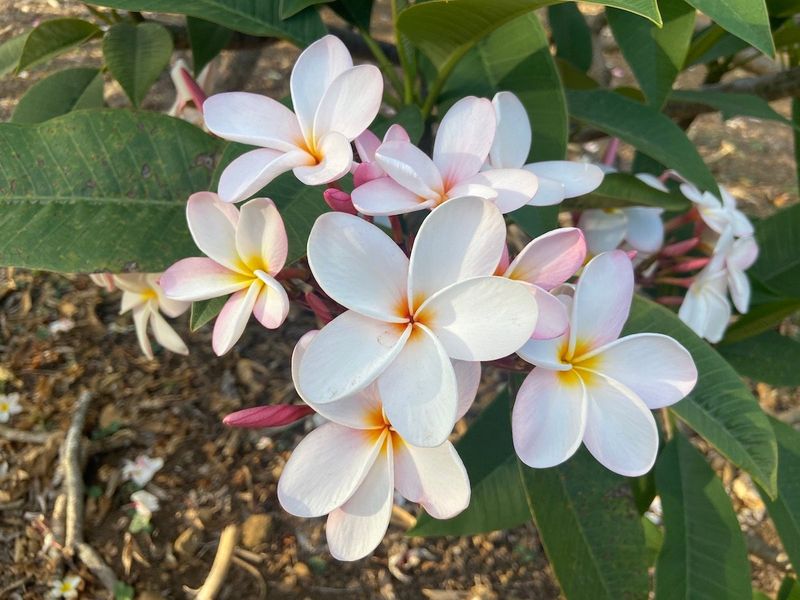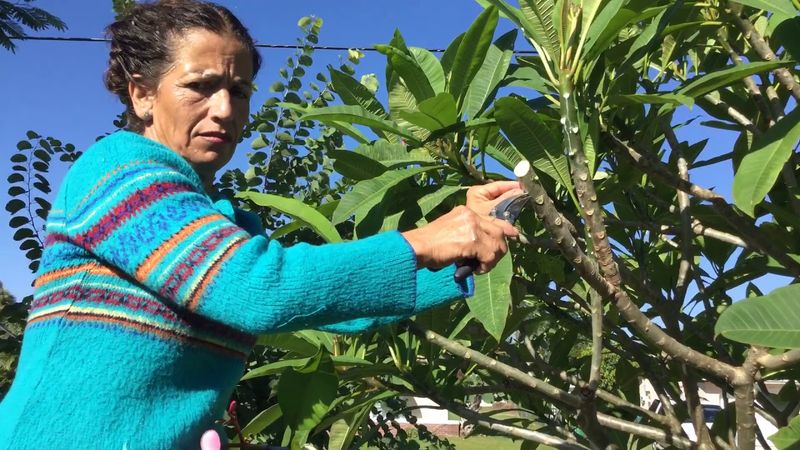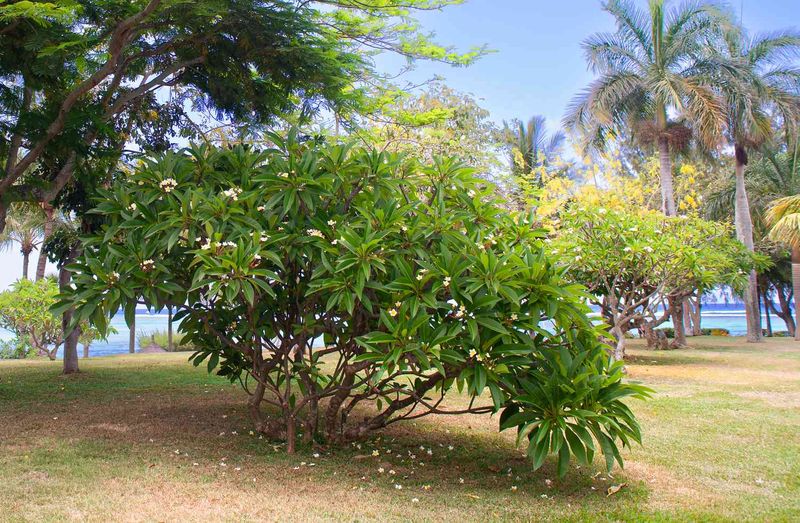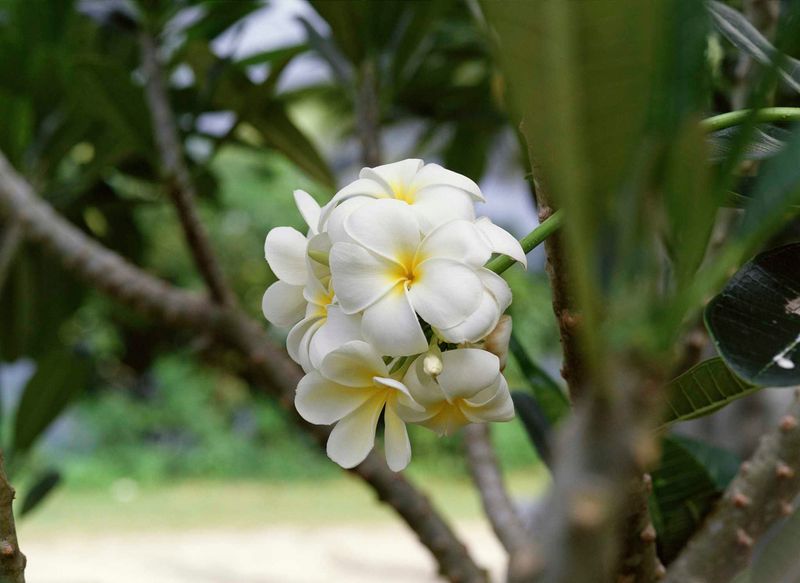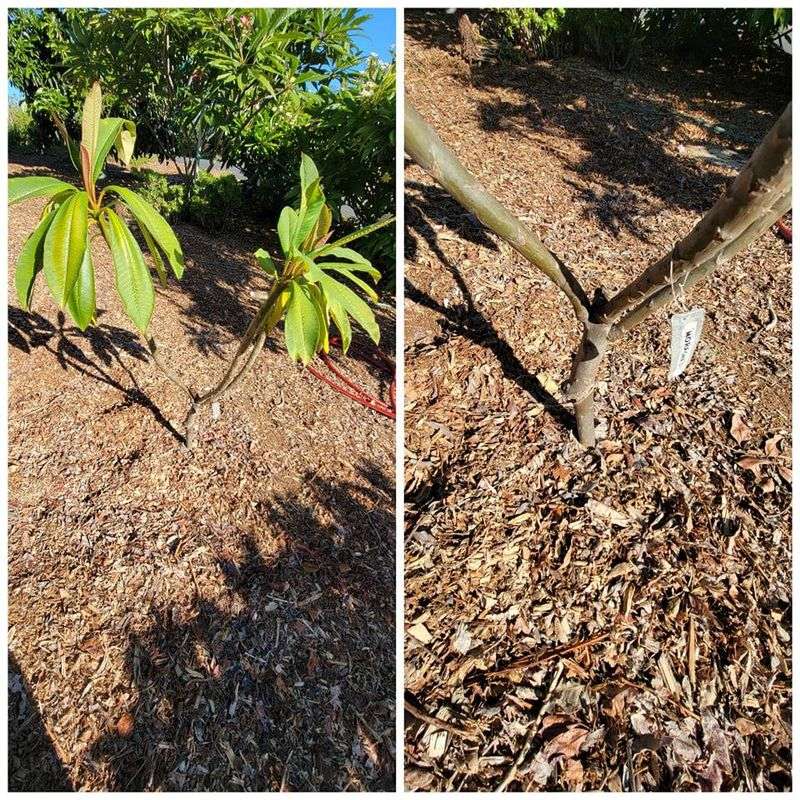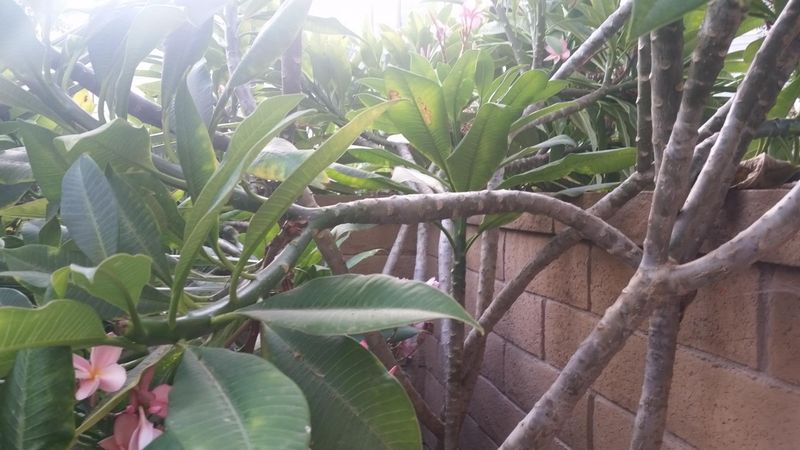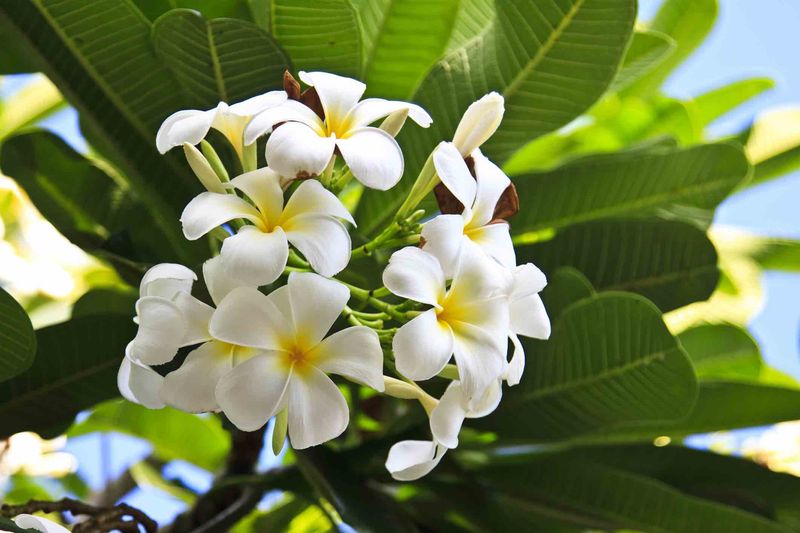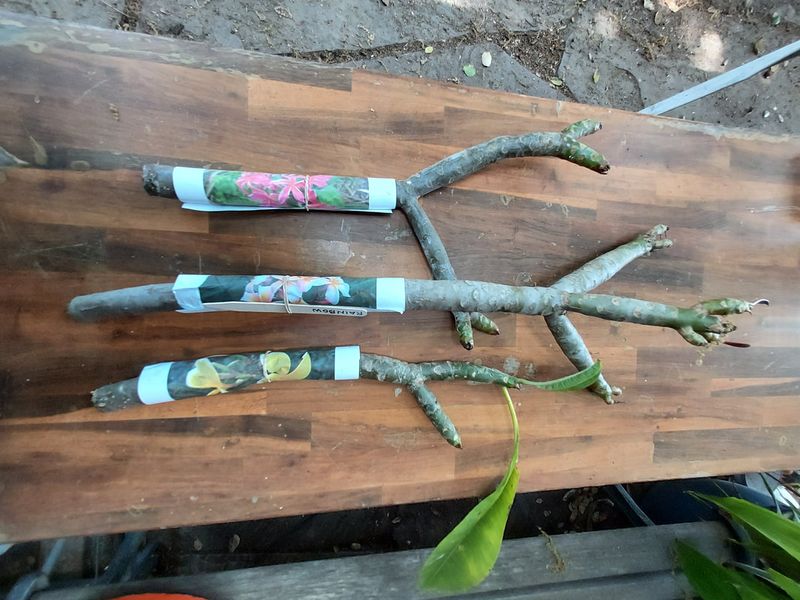Plumeria trees, often adored for their intoxicating fragrance and vibrant blooms, can transform any garden into a tropical paradise.
Cultivating these beautiful trees comes with its own set of challenges, but with a few expert tips, you can watch your Plumeria thrive.
Whether you’re a seasoned gardener or a novice, these insights will guide you through the process of planting and nurturing your own stunning Plumeria tree.
1. Choose the Right Location
Selecting the perfect location is the first step in ensuring your Plumeria’s success. Opt for a sunny spot in your garden where the plant can bask in full sunlight for at least six hours a day.
This tropical beauty thrives in warmth, so consider the orientation of your garden. In addition to sunlight, check that the soil offers excellent drainage. Plumeria cannot tolerate waterlogged conditions, which can lead to root rot.
Elevate the soil bed, if necessary, to improve drainage. Preparing the right location can set the foundation for a healthy, flourishing Plumeria tree.
2. Use Quality Soil
A thriving Plumeria tree begins with quality soil. Focus on a well-aerated mix that drains well yet retains enough moisture to nourish the roots. Consider incorporating perlite or pumice to enhance drainage.
These additions prevent the compacting of soil, which can stifle root growth. If you’re unsure about your soil’s quality, a simple test can help. Dig a small hole and fill it with water to see how quickly it drains.
Adjust your soil composition based on the results. Providing the right soil consistency is key to supporting your Plumeria’s growth.
3. Water Wisely
Mastering the art of watering is crucial for a Plumeria tree’s health. Overwatering is a common mistake, so aim to let the top inch of soil dry out between waterings. Plumeria trees have succulent-like qualities, storing water in their branches.
This means they can tolerate periods of dryness more than excess moisture. Adjust your watering frequency based on the season; less in winter and more during active growth in spring and summer.
Observing your plant’s leaves is also helpful; wilted or yellow leaves might indicate a watering issue.
4. Prune for Growth
Pruning is an essential practice to encourage a full and vibrant Plumeria tree. Use sharp, clean shears to remove dead or diseased branches, promoting healthier growth. Focus on shaping the tree to improve air circulation among the branches.
This not only enhances its aesthetic appeal but also reduces the risk of fungal infections. Prune during the dormant season, typically in late winter, to stimulate growth when spring arrives.
Ensure cuts are clean to prevent tearing the bark. Thoughtful pruning can significantly impact your Plumeria’s overall health and beauty.
5. Fertilize Regularly
Regular fertilization provides the nutrients your Plumeria craves. Opt for a balanced, slow-release fertilizer specifically formulated for blooming plants. The nutrients support vibrant blooms and robust growth.
Apply fertilizer during the growing season, from spring through early autumn. Avoid over-fertilizing, as this can burn the roots and lead to poor plant health. Monitor your tree’s response and adjust accordingly.
A well-fed Plumeria rewards you with lush foliage and an abundance of flowers. Carefully following a fertilization schedule can make a noticeable difference in your plant’s vigor.
6. Protect from Pests
Keeping pests at bay is pivotal in maintaining a healthy Plumeria tree. Common pests include aphids, spider mites, and mealybugs. Regularly inspect your tree, especially the undersides of leaves and stems, for any signs of infestation.
Early detection is key to controlling pests before they wreak havoc. Use insecticidal soap or neem oil as a natural remedy to eliminate unwanted guests.
Encourage beneficial insects like ladybugs to visit your garden, offering a natural solution to pest problems. Vigilance in pest control ensures your Plumeria remains vibrant and trouble-free.
7. Mulch for Moisture
Mulching helps retain soil moisture and keeps the roots of your Plumeria cool. Apply a layer of organic mulch, such as wood chips or bark, around the base of the tree.
This not only conserves moisture but also suppresses weed growth, which competes for nutrients. Be mindful not to pile mulch against the trunk, as this can cause rot. Refresh the mulch layer annually to maintain its efficacy.
Mulching is a simple yet effective way to support your Plumeria’s growth by creating a more stable and nourishing environment.
8. Provide Proper Support
Young Plumeria trees often require support to grow upright and withstand strong winds. Use stakes or cages to provide stability, especially in the early years. Choose materials that won’t damage the delicate bark, and avoid tying too tightly.
Properly supported trees develop stronger trunks and are less prone to breakage as they mature. As the tree establishes, gradually remove supports to encourage self-reliance.
Monitoring and adjusting supports are essential to promote healthy structural development. Investing in support early on pays off with a robust and resilient Plumeria tree.
9. Control Temperature
Temperature control is vital for Plumeria trees, particularly in regions prone to cold snaps. While Plumeria thrives in warmth, freezing temperatures can be detrimental. Protect your tree by wrapping it in frost cloth or moving it indoors during cold spells.
For those planted in pots, repositioning them to a sheltered area can make a significant difference. Understanding your climate and preparing accordingly can prevent frost damage.
Allow your Plumeria to experience seasonal changes while safeguarding it from extreme cold. Balancing exposure to temperature variations ensures a healthy growth cycle.
10. Propagation Techniques
Propagating Plumeria through cuttings is an exciting way to expand your garden. Choose healthy, mature branches for cuttings, preferably 12 to 18 inches long. Let the cuttings dry for a few days to allow the ends to callous, which aids in rooting.
Plant in a well-draining soil mix and water sparingly to prevent rot. Rooting hormones can enhance success rates but aren’t necessary. Provide warmth and sunlight to encourage new growth.
The process may take several weeks, so patience is key. Propagation offers a rewarding opportunity to cultivate additional Plumeria trees.
11. Seasonal Adjustments
Adapting to seasonal changes is crucial for thriving Plumeria trees. In cooler months, growth slows, and leaves may drop, signaling dormancy. During this time, reduce watering and withhold fertilization to prevent stress.
As spring approaches, gradually resume regular care to support new growth. Observing these natural cycles ensures your tree’s longevity and vitality. Adjustments according to the seasons help the tree maintain a balanced growth pattern.
Embracing these changes allows your Plumeria to flourish year-round, rewarding you with its stunning beauty and fragrant blooms.
